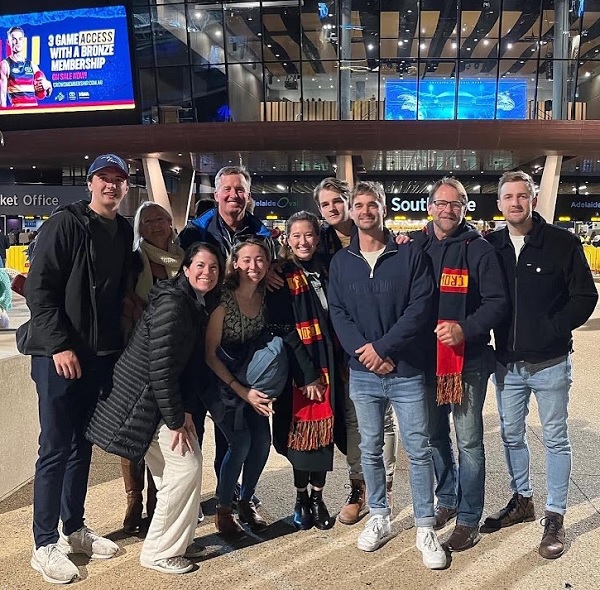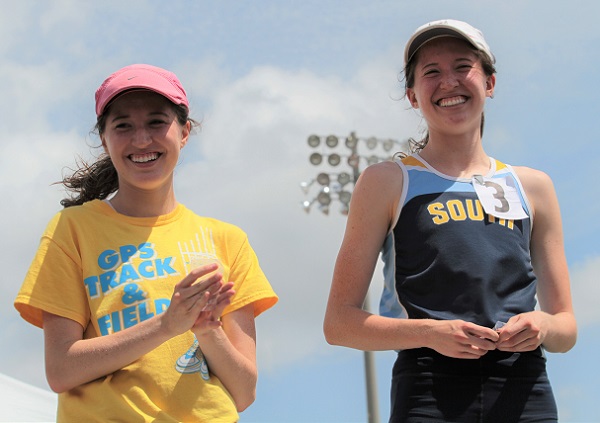
Running Set Life's Stage for Grosse Pointe South's Record-Setting Meier Sisters
By
Tom Markowski
Special for Second Half
July 28, 2022
A decade ago the Meier twins, Haley and Hannah, were instrumental in changing the dynamics of the track & field and cross country programs at Grosse Pointe South.
South had never won an MHSAA Finals team title in either sport before their arrival at the school in 2009. Under longtime coach Steve Zaranek, the Meiers led South to three consecutive MHSAA Lower Peninsula Division 1 track titles (2011-13) and another championship in cross country (2011), while forming half of a national record-setting 3,200-meter relay in the former.
“I've never seen anything like it,” said Zaranek, who will lead the program for a 44th season next spring and recently retired from teaching. “We had all of those athletes. The highlight was the distance (events) with the Meier twins. It was the perfect storm.”
The Meiers attended Duke University for their first two years of college before they transferred to University of Michigan. Their career paths have taken them in different directions, but they remain as close as ever.
Two years ago Haley moved to Adelaide, Australia, with her fiancé Jordy Hewitt, who she met at U-M. Hannah soon will leave Ann Arbor for Charlottesville, Va., where she will begin work as a dietitian within the medical school at the University of Virginia.
Two weeks ago, Haley and Hannah were together in Nashville, Tenn., along with four friends, for Haley's bachelorette celebration. The wedding is scheduled for Oct. 8 on the island of Kauai in Hawaii.
 Haley, who received her bachelor’s degree in education, is in her second year as a middle school teacher in Adelaide, and Hewitt works as a consultant at Price Waterhouse just blocks from St. Mary's College, the all-girls private school where Haley teaches.
Haley, who received her bachelor’s degree in education, is in her second year as a middle school teacher in Adelaide, and Hewitt works as a consultant at Price Waterhouse just blocks from St. Mary's College, the all-girls private school where Haley teaches.
“I always loved spending time with kids,” Haley said when asked why she chose the teaching profession. “When they figure things out, it's so rewarding. It comes with its challenges. I've been practicing my patience daily.”
This past spring Hannah completed her master's degrees in both sports management and public health from U-M, to go with her bachelor’s in kinesiology. Her longterm goal is to work with athletes in their efforts to maintain a healthy lifestyle.
Hannah Meier began researching various types of food and how they affects athletes and their eating habits. For instance, Hannah is a firm believer in a person eating breakfast 30-to-60 minutes after rising to allow for metabolism to kick in properly.
“I was getting injured (so often) between lifting and cross training that I decided to go into public health,” Hannah said. “That's one of the reasons I left Duke. They didn't offer a public health (curriculum).”
The Meiers were highly competitive at both Duke and U-M. At Duke, Haley won the Atlantic Coast Conference title in the 1,500, and for U-M she won the Big Ten Conference title in the indoor mile. In her last season (2019), Hannah won the Big Ten title in the mile with a school-record time of 4:32.46. Both qualified for the NCAA Championships on multiple occasions.
Their college accomplishments stacked on top of significant achievements that helped Grosse Pointe South to those three Finals teams championships.
Hannah continues to own the all-Class/Division Finals records in the 800-meter run (2:06.35, 2013) and 1,600 run (4:39.23, 2013 – also ninth-best all-time nationally at the high school level). She and Haley, along with Kelsie Schwartz and Ersula Farrow, set that national high school record in the 3,200 relay of 8:48.29 in 2012. (Of note, the second-best 3,200 relay time in MHSAA LPD1 Finals history was recorded by Oak Park in 2015, 8:54.29, as Farrow teamed with Jayla Fleming, Lashae Bowens and Dorriann Coleman.)
To show how competitive and talented the twins were, when Hannah set the all-Finals record in the 1,600 in 2013, the previous all-Finals record was the 4:42.60 she had run in 2011. Haley's time of 4:42.43 in 2013 was good enough to top her sister's 2011 record, but not the time Hannah posted that June afternoon – as Haley finished in that race to her sister.
For Zaranek, the post-Meier era has included a team that placed sixth in LP Division 1 in 2014 and another top-15 finisher since, with at least a few Finals qualifiers almost every season.
 “For me and our program,” Zaranek said, “to get to the Regional level and compete, that's the sign of a really good program. I really think the best programs are the ones that allow the students to try different events. We talk about opportunities. We talk about contributing to the team.”
“For me and our program,” Zaranek said, “to get to the Regional level and compete, that's the sign of a really good program. I really think the best programs are the ones that allow the students to try different events. We talk about opportunities. We talk about contributing to the team.”
For the Meiers, they cherish the memories and continue to run but at a much slower pace. In addition to the memories and accomplishments, they say the sport made them better people, more appreciative for what they have and who they are.
“Haley and I ... we have a better perspective on life,” Hannah said. “We are able to handle situations much more calmly.
“And it's all because of Coach Z. We weren't fans of running in middle school. Without running we wouldn't have gone to U-M and graduated. If we hadn't gone to U-M, we wouldn’t have met our significant others.”
(Hewitt, from Australia, was a middle distance runner for U-M when he and Haley met. Hannah's boyfriend, Kevin Haughn, was competing in the pole vault for the Wolverines when they first crossed paths.)
Haley said her life, and Hannah's, are so busy that finding time to run requires a few less hours of sleep at times.
“I enjoy it, but the hardest part is getting up in the morning to do it,” she said. “It's a transition.
“After all these years, it's still practicing good habits. Running has taught us to be resilient, to persevere.”
2021-22 Made in Michigan
July 25: 2005 Miss Basketball DeHaan Cherishing Newest Title: 1st-Time Mom - Read
July 21: Championship Memories Still Resonate with St. Thomas Star Lillard - Read
July 14: Portage Central Champ Rolls to Vanderbilt, Writing Next Chapter in Alabama - Read
July 12: Coaching Couple Passing On Knowledge, Providing Opportunities for Frankfort Wrestlers - Read
June 30: Hrynewich's Star Continuing to Rise with Olympic, Pro Sports Arrivals - Read
PHOTOS (Top) At left, Hannah and Hailey Meier enjoy the moment after helping set a national high school record for Grosse Pointe South in the 3,200 relay in 2012. At top right, Haley and fiancé Jordy Hewitt. At bottom right, Hannah and boyfriend Kevin Haughn. (Middle) The Meier sisters, center, bring their family together in Australia. (Below) Haley, left, and Hannah Meier top the LPD1 1,600 medalist podium in 2013. (MHSAA Finals photos from RunMichigan.com; recent photos courtesy of Hannah and Haley Meier.)
State Champs! Network: 2024 Track & Field Finals Highlights
July 10, 2024

